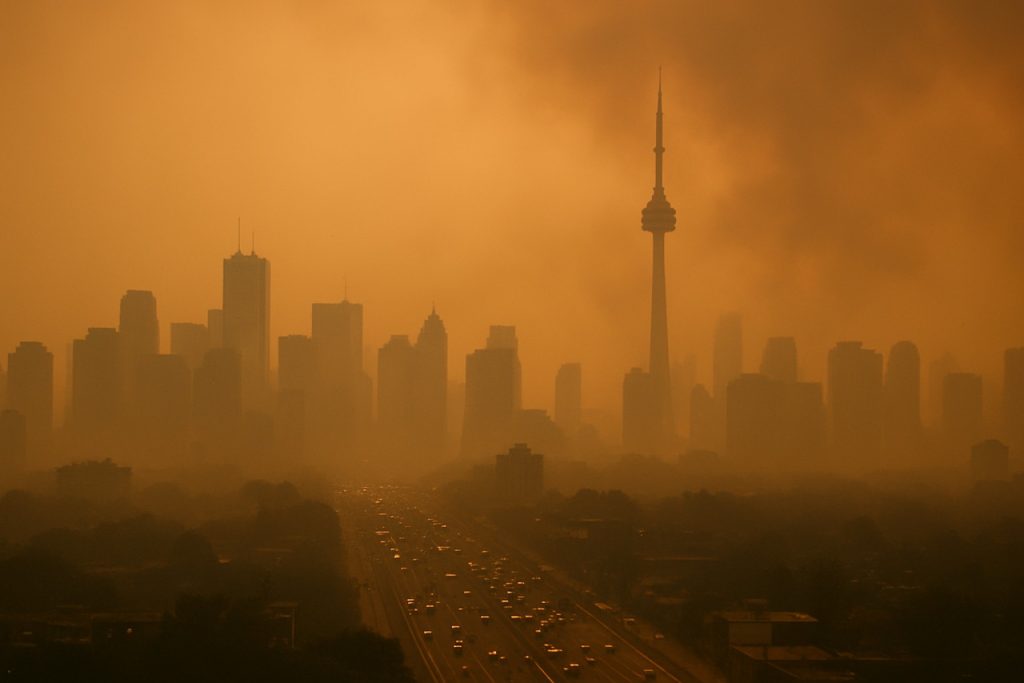
Canada’s Wildfire Crisis Explodes in 2025—Monster Blazes, Toxic Smoke, and Zombie Fires Threaten North America
Canada battles more than 1,700 wildfires as relentless blazes spew toxic smoke across North America and “zombie” fires refuse to die out.
- 1,746+ wildfires blazing nationwide as of June 5, 2025
- 6.4 million acres scorched—larger than Vermont
- States of emergency declared in multiple provinces
- Smoke impacts: Air quality warnings from Minnesota to Florida
Canada’s wildfire nightmare is back—and this time, it’s even worse. Since mid-May 2025, fiery infernos have torched forest after forest across Manitoba, Ontario, Saskatchewan, and beyond. Intense heat, relentless drought, and parched earth have sparked more than 1,700 wildfires, with some flames burning hot enough to generate towering pyrocumulonimbus “fire clouds” visible from space.
NOAA satellites detected massive, smoke-belching swaths stretching thousands of miles. The smoke blanketed cities, threw traffic into chaos, and forced thousands to evacuate as emergency sirens blared. In Manitoba and Saskatchewan, states of emergency were declared. In the west, “zombie” fires—those stubborn blazes that braved winter beneath layers of snow—rolled into their third consecutive year, defying firefighters’ best efforts.
What’s Fueling Canada’s Unstoppable Wildfires in 2025?
Canada’s boreal forests have always burned. But this year’s inferno is different. Meteorologists point to triple threats: record-setting heat, stubborn drought, and crisp, dry winds. While some fires ignite naturally from lightning, human activity is increasingly to blame—an unsettling trend NOAA experts warn may accelerate.
By June 2025, over 2.6 million hectares—an area the size of 10,000 square miles—have fallen to the flames. That’s more land than was scorched during some of the worst fire years in recorded history.
How Far Has the Smoke Spread?
The smoke has traveled far and wide—clouding skies over the U.S. Midwest from Minnesota and Wisconsin, stretching as far south as Florida. Air quality dropped to “unhealthy” levels in North Dakota, Michigan, and South Dakota, and even reached “very unhealthy” thresholds in Minnesota. Wheezing, coughing, and nightmarish red skies became the new normal for millions.
Residents along the U.S. East Coast also saw moderate air-quality dips thanks to the relentless haze. States scrambled to issue alerts and provide shelters for at-risk groups, while EPA monitors went into overdrive tracking pollutant spikes.
What Are Pyrocumulonimbus Clouds & Why Are They Dangerous?
When wildfires burn hot and fast, they can spawn towering thunderstorm-like pyrocumulonimbus clouds. NOAA’s GOES-18 (GOES West) satellite spotted these rare monsters above Alberta’s blazes—massive fire clouds that can trigger lightning, gusty winds, and even new fire outbreaks. These clouds hurl dangerous particulates and embers high into the atmosphere, sometimes leading to unpredictable “firestorms.”
How Do NOAA Satellites Help Fight Fires?
In the 2025 wildfire era, NOAA’s advanced satellites remain frontline heroes. Their eye-in-the-sky technology tracks fire intensity, size, direction, and smoke patterns in real-time. This critical data drives fast, accurate air quality warnings, informs evacuation routes, and gives first responders precious minutes to react.
NOAA’s wildfire imaging also uncovers the formation of dangerous pyrocumulonimbus clouds—vital for forecasting extreme fire weather patterns. As wildfires become more frequent and severe, state-of-the-art satellite tools are saving lives and shielding communities.
What Should You Do If Smoke Affects Your Area?
- Check air quality alerts from National Weather Service and local agencies
- Limit outdoor activities, especially for children, elderly, or those with breathing issues
- Use air purifiers or safe indoor spaces if possible
- Follow evacuation orders immediately if issued in your area
Stay prepared—this wildfire season is far from over. Protect your lungs, your loved ones, and your community:
- Monitor trusted news and weather sources daily
- Create an evacuation “go-bag” with essential items
- Seal windows and doors to keep smoke outside
- Support wildfire response charities or local firefighters
Don’t let wildfire smoke catch you off guard—plan ahead and stay informed this season!



